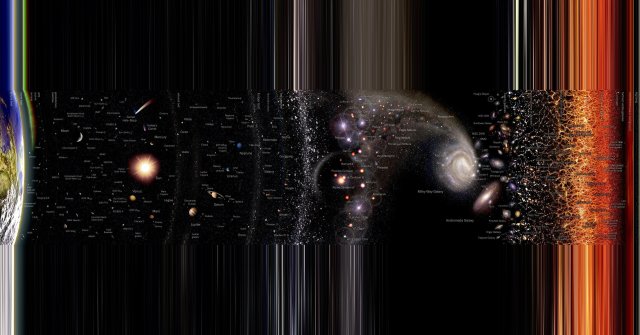
It’s a long way from planet Earth to the Universe’s edge.
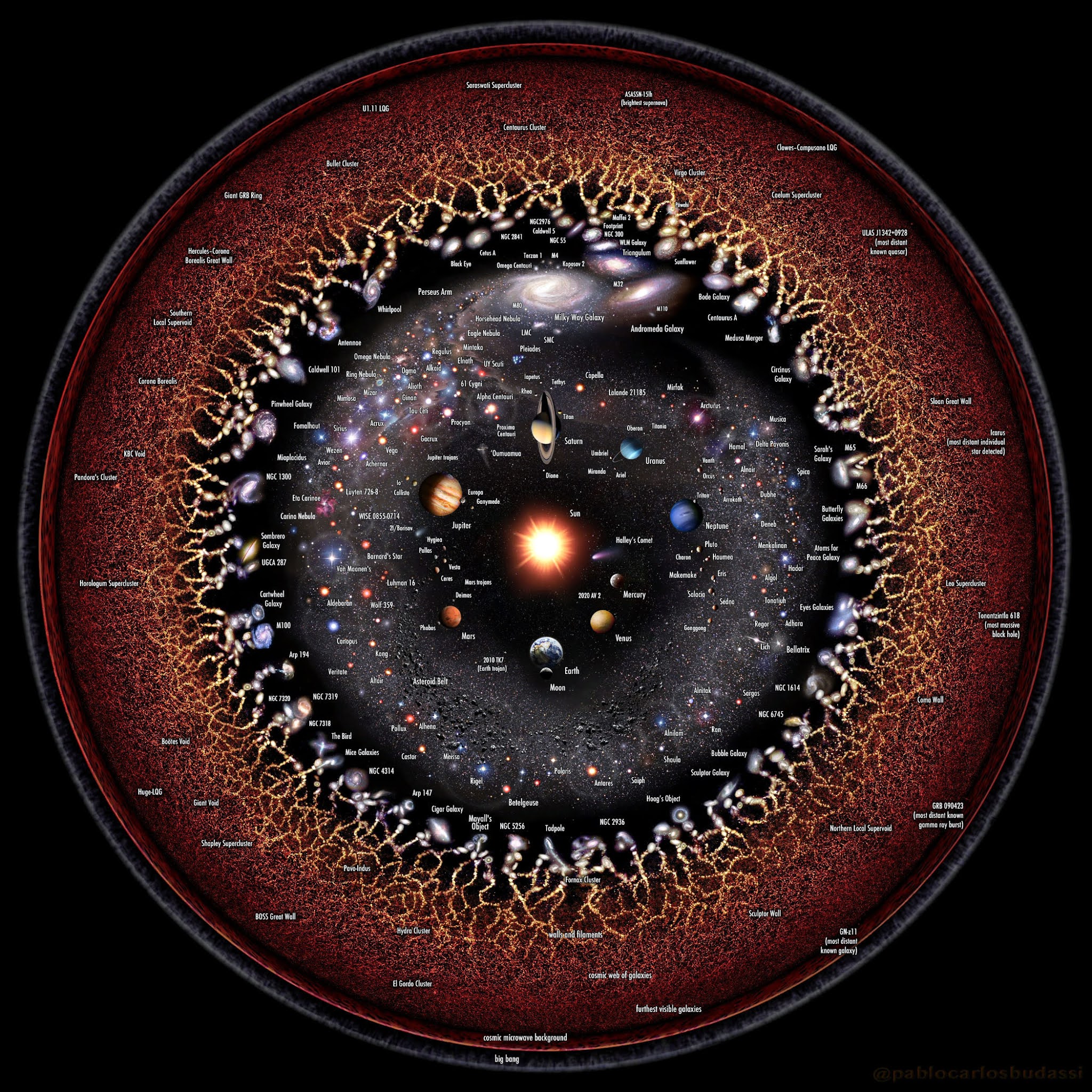
Our tiny home world, seemingly massive, is merely 12,742 km (7,917 miles) across.

We typically think linearly: where the Sun is ~10,000 times farther away than Earth’s diameter.

But cosmically, logarithmic scales — where each multiplicative factor of “10” defines our cosmic ruler’s next mark — serve us far better.
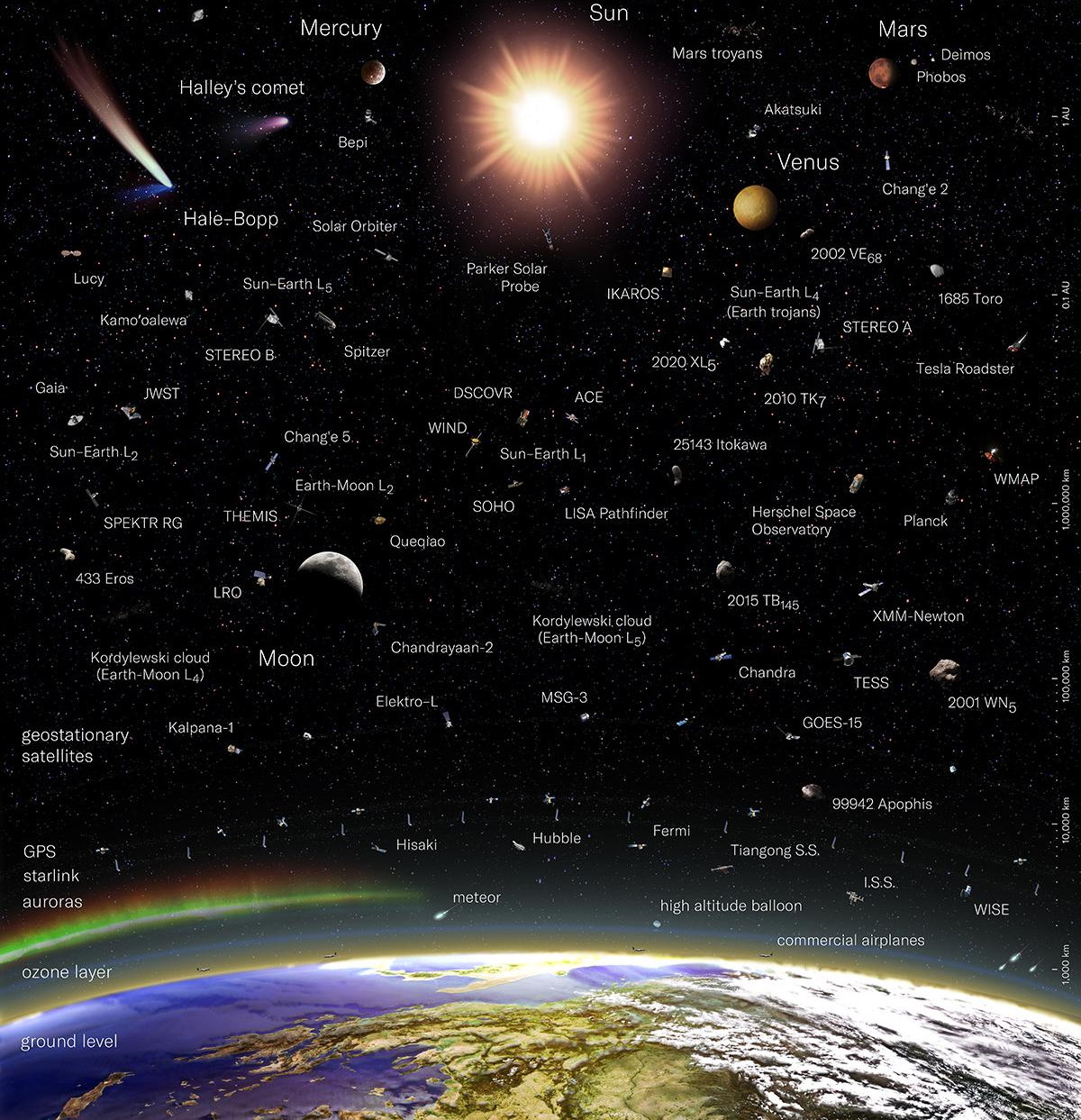
On a logarithmic scale, the Sun, Mercury, and Mars are practically equidistant.
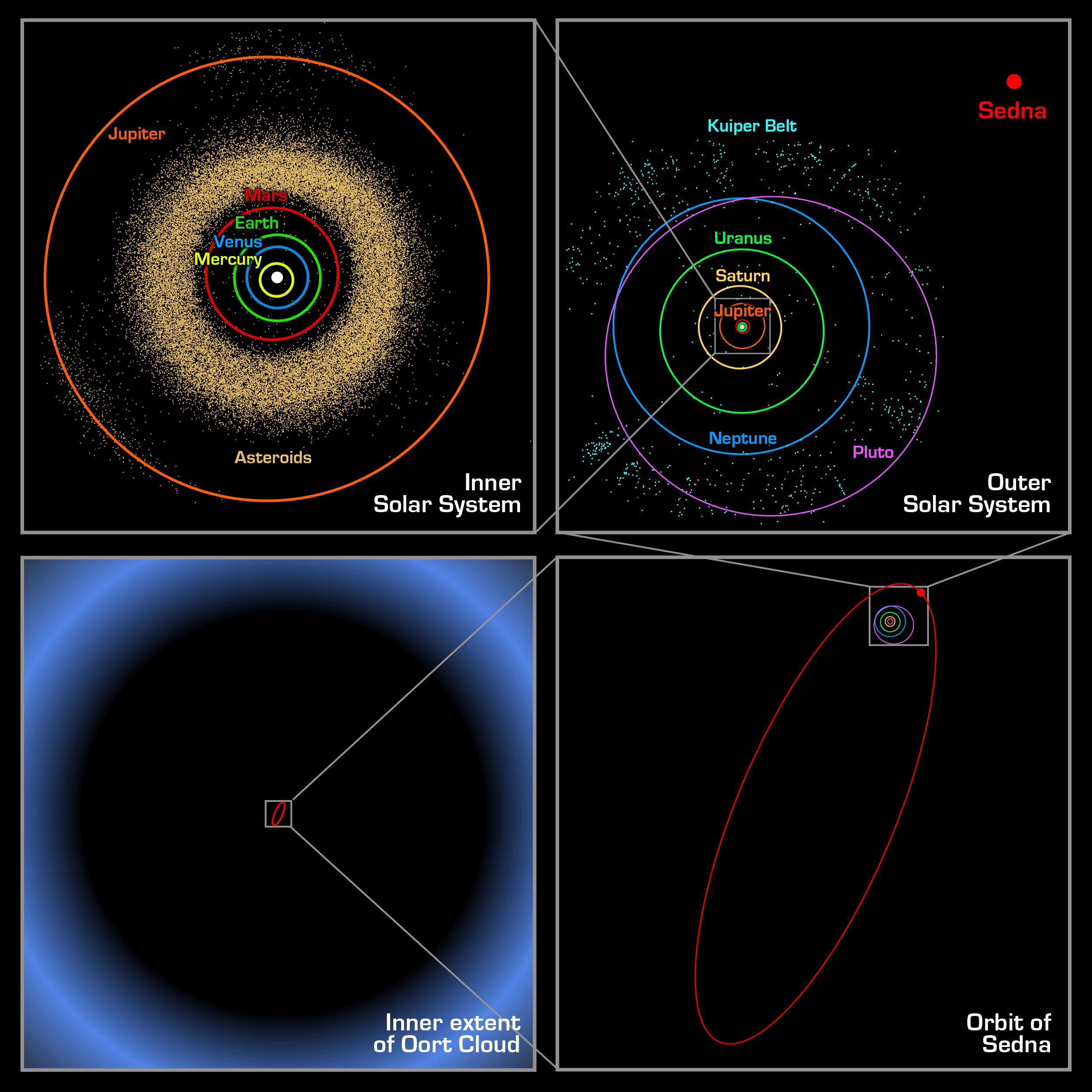
Another factor of ~10,000 in distance takes us to the Oort cloud.
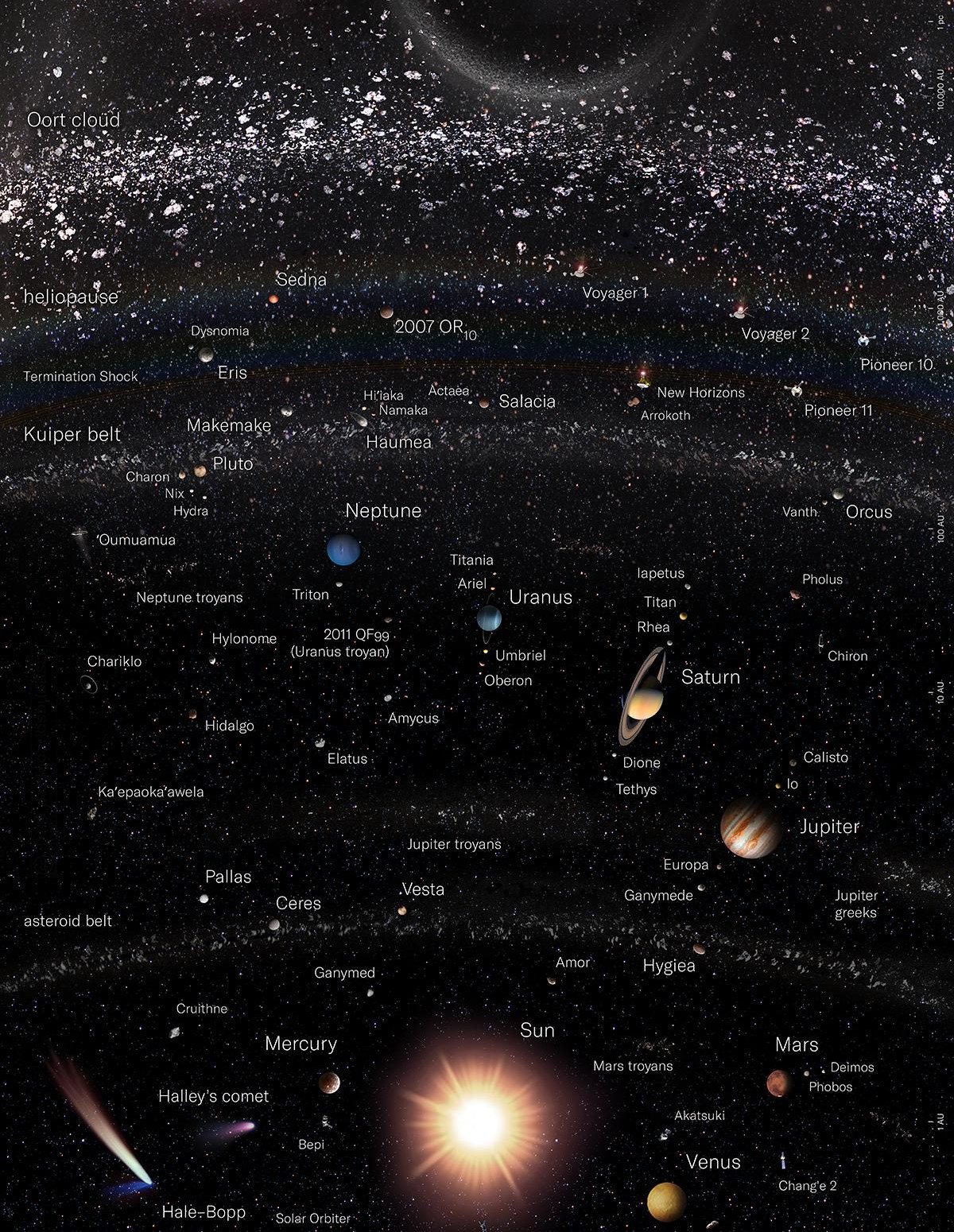
A short logarithmic jump takes us from the Solar System to the stars.

Many of the brightest stars in Earth’s skies are under 1,000 light-years away.
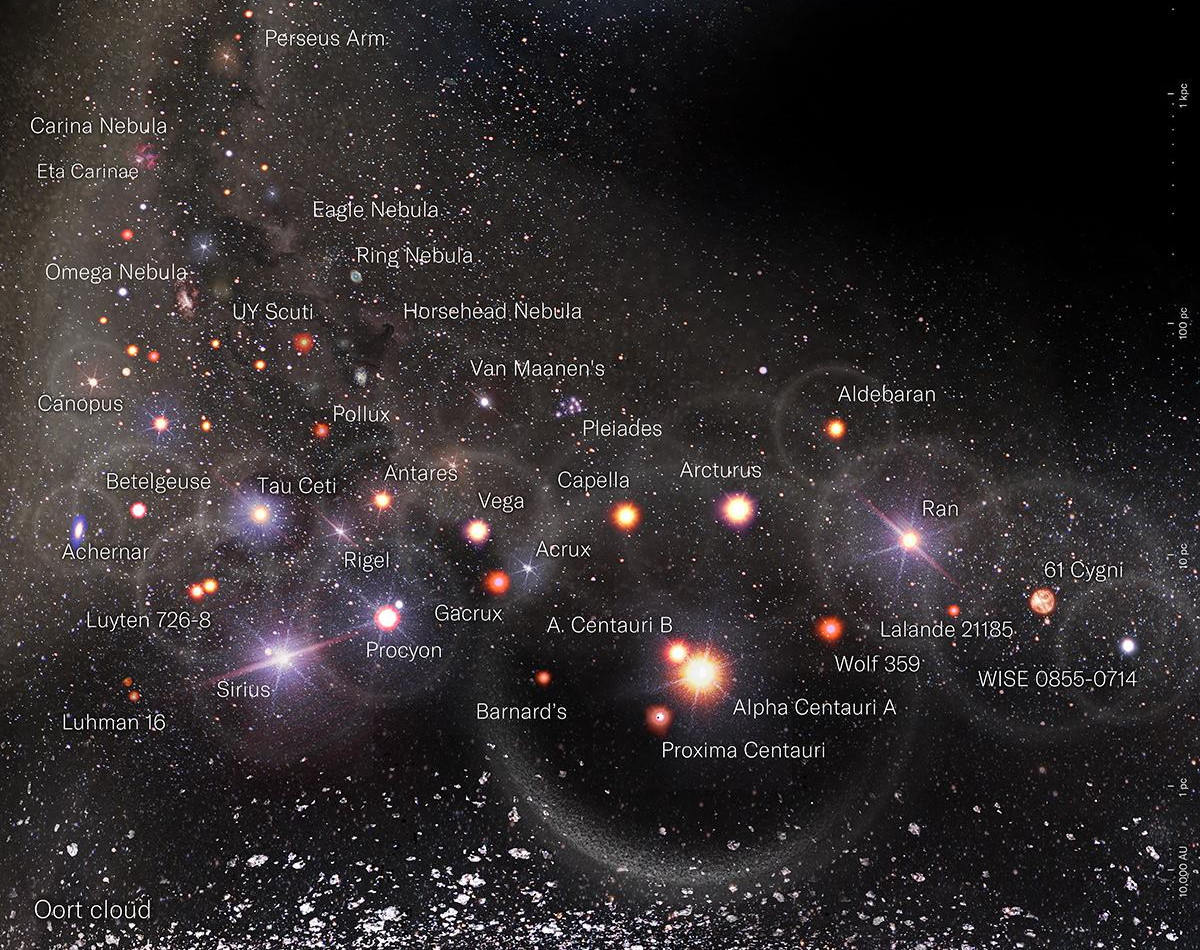
Another small logarithmic jump brings us to our nearest spiral arms.
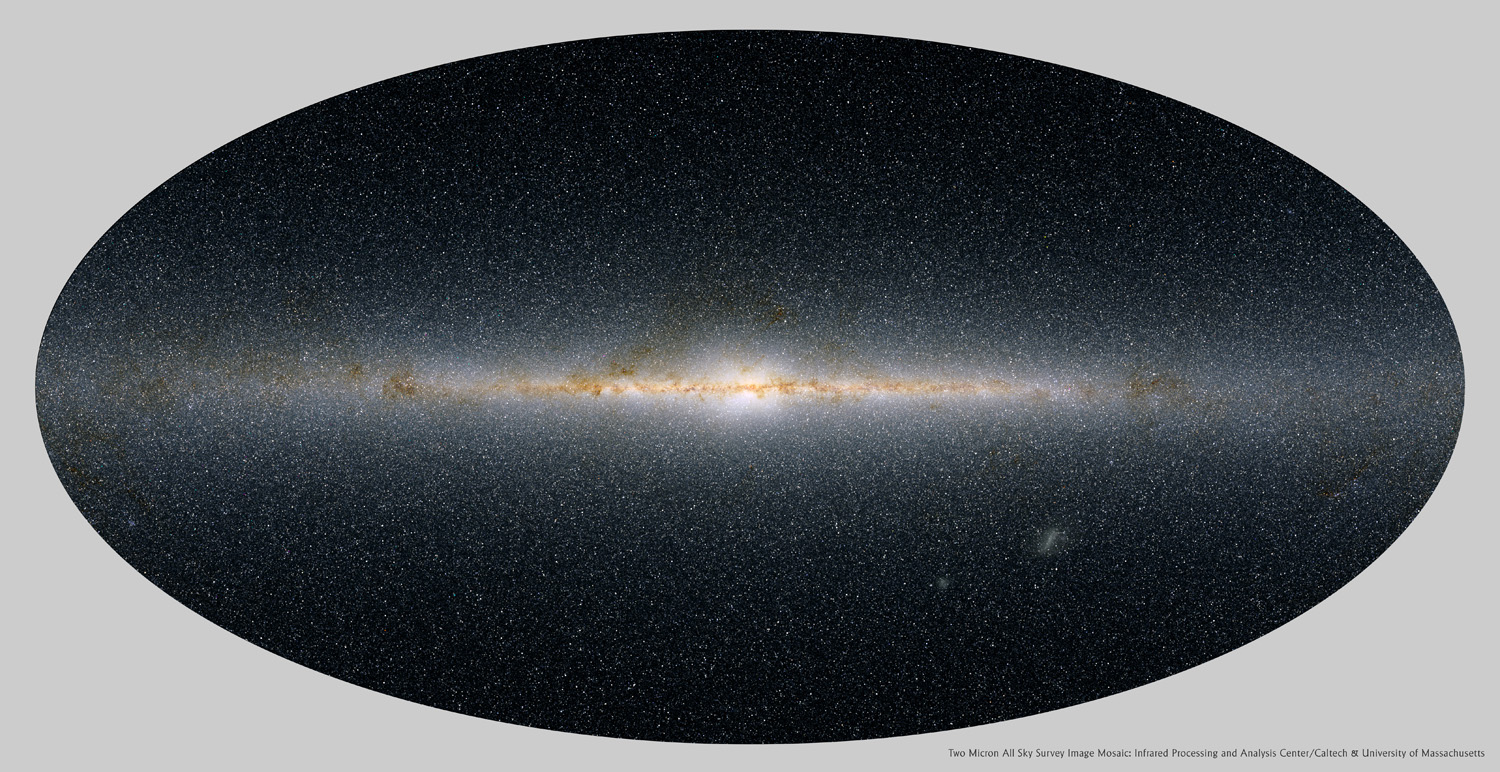
Beyond that lies the full Local Galactic Group.
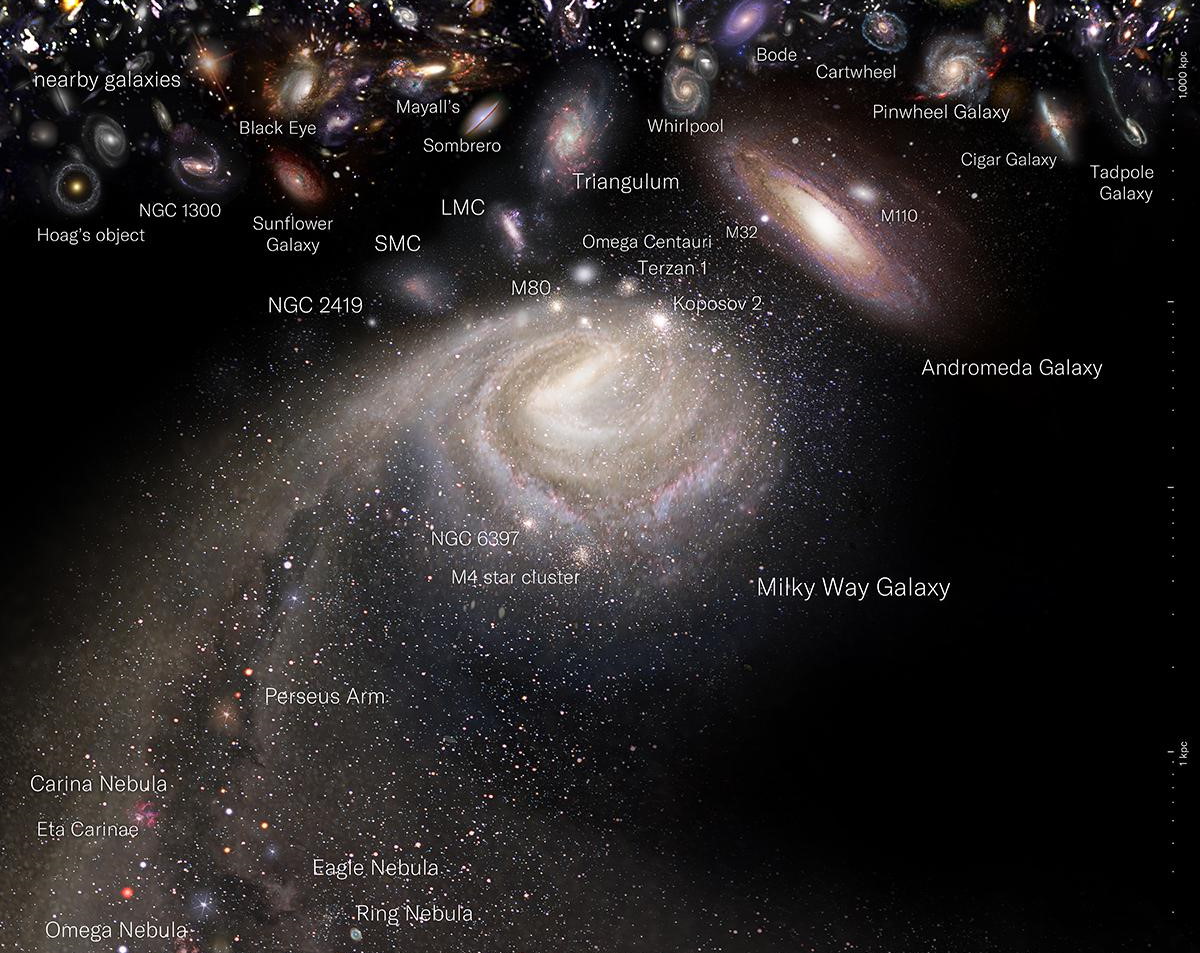
Rapidly, neighboring galaxies become ubiquitous.

Subsequent cosmic steps reveal large-scale galaxy clustering.
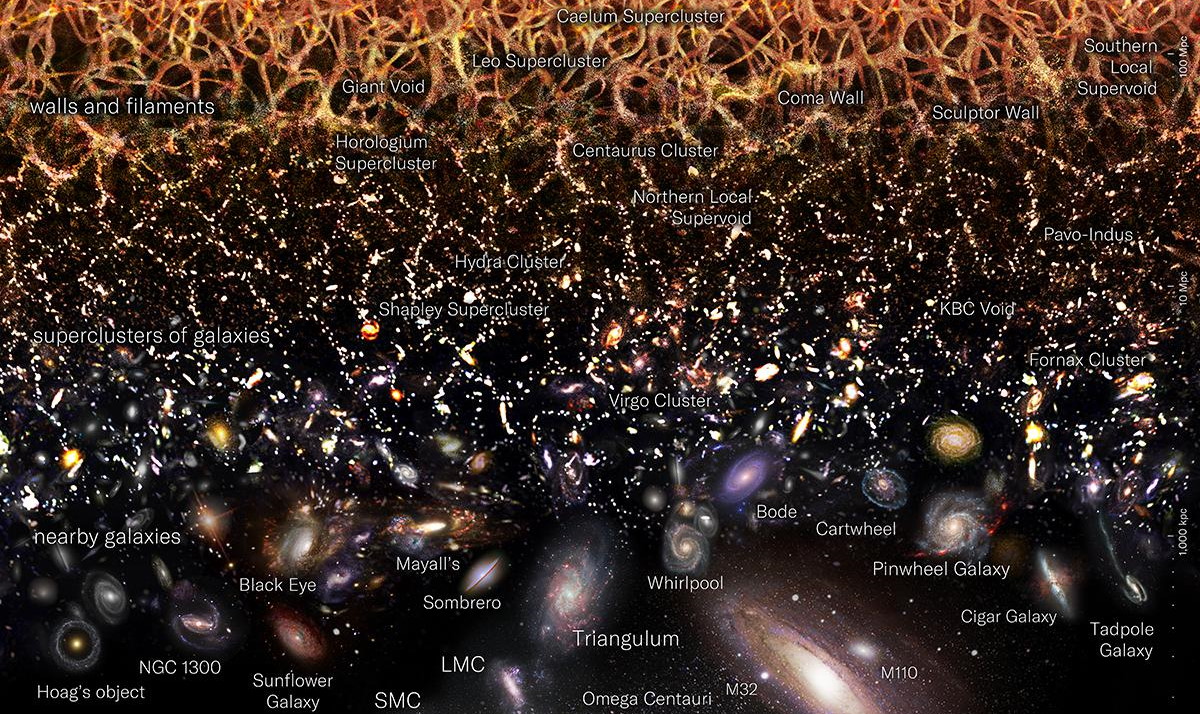
Eventually the largest structures of all are revealed: the great cosmic web.

Many of these features are only apparent: dark energy will tear these pseudostructures apart.
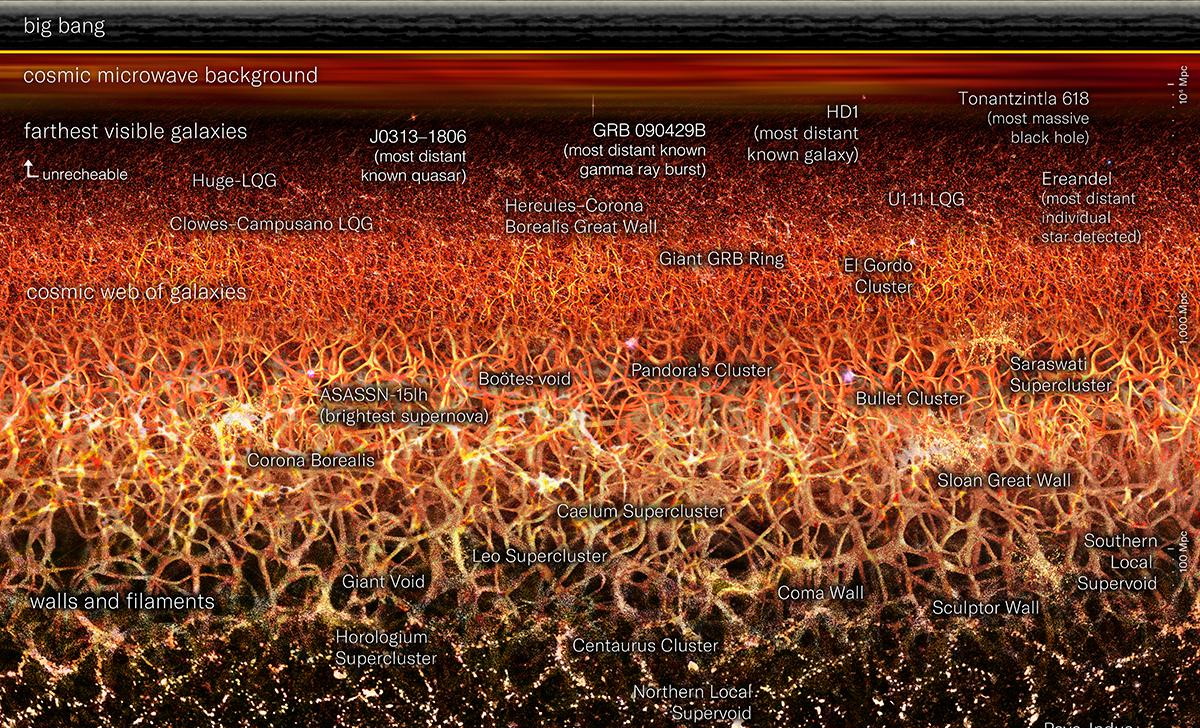
At the cosmic limits, the edges of time are revealed: the earliest moments after the hot Big Bang.
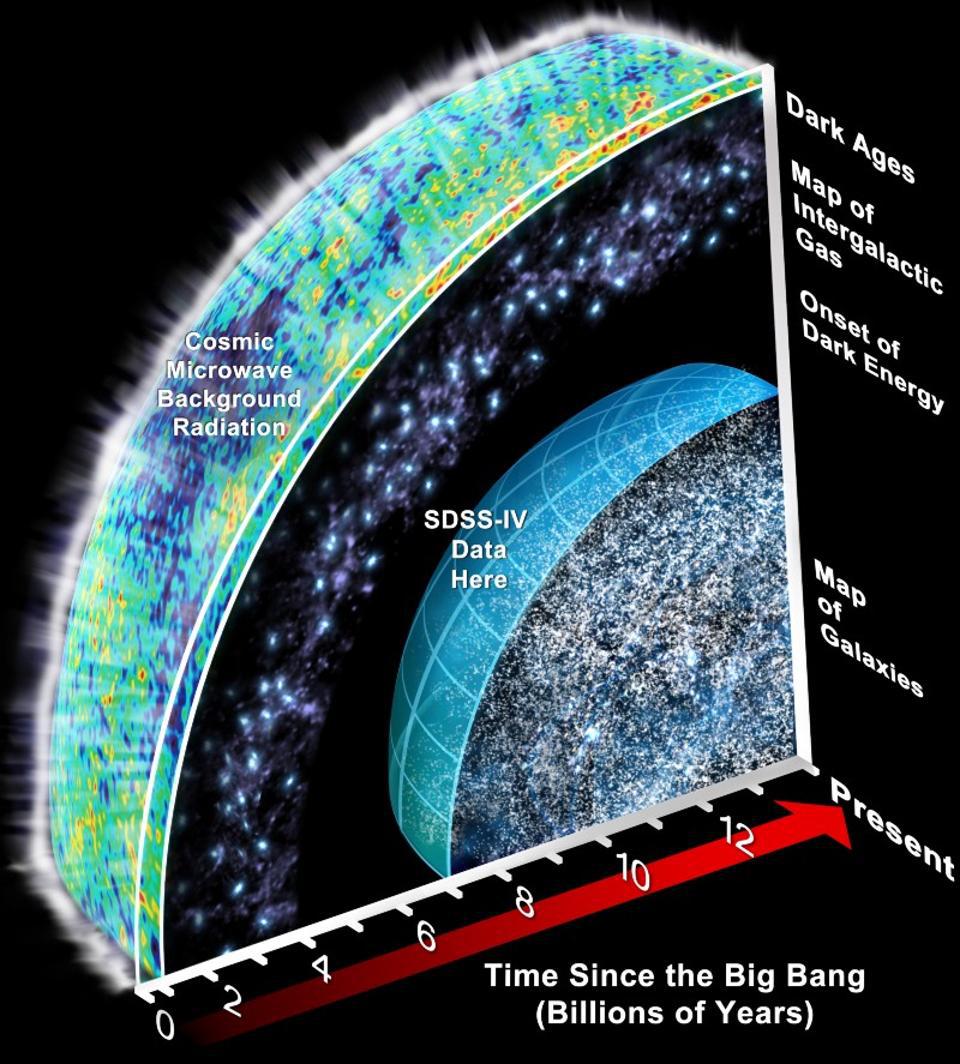
Thanks to artist Pablo Carlos Budassi for creating this brilliantly illustrated cosmic journey.

Mostly Mute Monday tells an astronomical story in images, visuals, and no more than 200 words. This article was first published August of 2022. It was updated in September of 2025.
This article See the whole Universe at once in this unique logarithmic view is featured on Big Think.
Learn more about Jane Street internships at https://jane-st.co/internship25-SM
Everyone says the maximum height for a drinking straw is 10.33m, but it's not. I found out by making the tallest possible siphon.
Veritasium straw video: https://www.youtube.com/watch?v=HUmZrtiXDik
Periodic videos siphon in a vacuum: https://www.youtube.com/watch?v=8F4i9M3y0ew
Veritasium trees video: https://www.youtube.com/watch?v=BickMFHAZR0
You can buy my books here:
https://stevemould.com/books
You can support me on Patreon and get access to the exclusive Discord:
https://www.patreon.com/stevemould
Twitter: http://twitter.com/moulds
Instagram: https://www.instagram.com/stevemouldscience/
Facebook: https://www.facebook.com/stevemouldscience/
TikTok: https://www.tiktok.com/stevemould
Buy nerdy maths things: http://mathsgear.co.uk
It is my increasingly firm belief that computers are tools that strip us of our humanity, converting our behaviour and thoughts into data that can be captured and commodified by other machines and their owners. They are not “just tools” – how can they be when we consider who made them and for what purposes, and how they continue to be used in our social and work lives?
The computer. The Internet. Artificial intelligence. These are military technologies, first and foremost. First and foremost and for a while now. And while certainly we must resist the teleology that positions these technologies always and forever thus, we have accomplished little, I'd argue, in wresting them free from their origins in “command control communication intelligence,” from that cybernetic move to reduce everyone and everything to code.
Many of us work in jobs that involve using computers and we are no doubt dealing with lots of data. We also have mortgages to pay and children to put through marketised education systems that have shifted the cost from the state to individuals. Living is an expensive, precarious undertaking. We have little to no freedom in forming the shape of our jobs, and the use of analytics – a term rooted in the military, surveillance and finance – in some form or other.
If you work in digital marketing, you’ll deal in depersonalising, martial and downright hostile language every day. We undertake campaigns, formulate a strategy and tactics, track website visitors – often without them knowing – and convert prospects. Data is a key weapon in this war.
How useful this activity is for anyone apart from Google is the subject of a different article. But consider whether you want – let alone need – to be doing this to your readers on your personal website.
When I started this blog – 17 years ago! – I installed WordPress’s analytics plugin, which told me how many people were visiting, what they looked at and who was linking to me. I didn’t ask whether I could track this information, and no-one volunteered it. Regardless of whether it was anonymised (yet another grisly marketing term), I was surveilling my readers.

I ditched analytics quite early in this blog’s history when I realised that knowing about my website visitors had zero effect on anything in the real world. For example, when Smashing Magazine linked to a WordPress theme I’d published I got thousands of visitors over a couple of days. The only practical outcome was that a couple of people approached me to redesign their websites. This would have happened regardless of whether I knew that I’d been linked to, and how many clicks this link had generated.
The other reason you might put analytics on your site is to know when someone links to your writing. Again, if the linker doesn’t intend to tell you, then you’re surveilling. You do not need to know every time your writing is mentioned.
If you link to someone else and you’d like them to know, there are ways to automate a notification, through webmentions, for example, or you can do the radical thing and actually tell them by sending an email or message on social media.
We should resist the urge to data-fy and commodify our personal websites. Unintuitively, that means smaller, more closed communities and networks where communication is intentional rather than automated and surveilled. You’ll never know everything about your website, or its readers, and nor should you.
